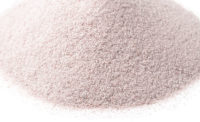Silica hazards from engineered stone countertops
A NIOSH Science Blog post

 By Karen Worthington, MS, RN, COHN-S; Margaret Filios, SM, RN; Mary Jo Reilly, MS; Robert Harrison, MD, MPH; and Kenneth D. Rosenman, MD
By Karen Worthington, MS, RN, COHN-S; Margaret Filios, SM, RN; Mary Jo Reilly, MS; Robert Harrison, MD, MPH; and Kenneth D. Rosenman, MD
A new engineered stone countertop product known as “quartz surfacing,” was created in the late 1980s by combining quartz aggregate with resins to create a product for use in home building and home improvement. Manufacturing of this material, including products such as CaesarStone™, Silestone™, Zodiaq™, or Cambria™ is a fast growing industry. First made in Israel and Spain, production of these materials has grown world-wide, driving quartz slab imports to the U.S. up 63% between 2011 and 2012 and 48% between April 2012 and April 2013 (Schwartzkopf 2013, StatWatch 2013). Quartz surfacing materials may contain up to 93% crystalline silica (Dupont 2010). In contrast, the percent of crystalline silica in a slab of granite is less than 45%, darker color granite has a lower percentage (Simcox et al. 1999).
Workers who fabricate and install quartz surfacing are at risk for overexposure to silica released during sizing, cutting, grinding and polishing. Prolonged inhalation of dust from silica-containing materials can lead to silicosis (scarring of the lungs). In addition to silicosis, scientific evidence indicates that occupational exposure to crystalline silica puts workers at increased risk for other serious health conditions: chronic obstructive lung disease, lung cancer, kidney and connective tissue disease, and tuberculosis. The focus of this blog is on silicosis, which has occurred in multiple workers in this industry.
Silicosis
Silicosis is caused by breathing in very fine (“respirable”) dust containing crystalline silica. Initially, individuals may be developing disease even without respiratory symptoms. Chronic silicosis typically develops over 10 or more years of exposure to low levels of respirable crystalline silica. However, high levels of exposure can cause faster development of the disease. The diagnosis is usually made through a chest radiograph, which should be classified by a NIOSH-certified Reader.
Cases of silicosis have been reported among engineered stone countertop workers in other countries. In a study published in 2012, researchers in Israel found 25 patients referred to their National Lung Transplantation Program with silicosis who shared a common exposure history. All had worked with the same commercial brand of decorative quartz surfacing material for 10–14 years and performed similar dry-cutting of the material for kitchens and other countertop applications (Kramer et al. 2012). Most recently, 46 cases of silicosis were reported in Spain in workers cutting and installing engineered stone countertops with silica content of 70-90% (Pérez-Alonso et al. 2014). These individuals were young (ages 29–37 years) and worked in the industry for 9–17 years.
Click here to read the rest of the post.
Looking for a reprint of this article?
From high-res PDFs to custom plaques, order your copy today!








